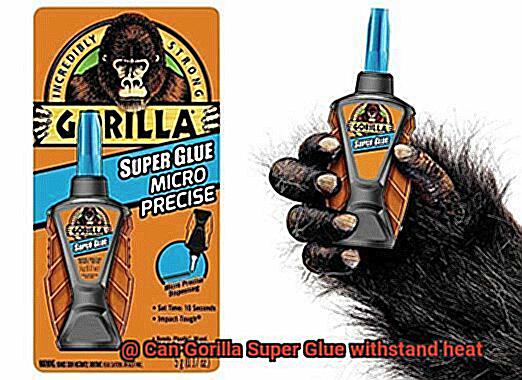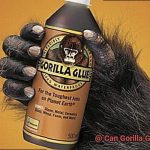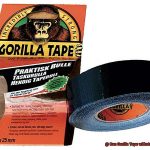Picture this: you’re in the middle of a DIY project, sweat dripping down your forehead as you desperately try to fix that broken vase. The pressure is on, and you need an adhesive that can handle the heat – quite literally. That’s where Gorilla Super Glue swoops in like a superhero, ready to save the day.
But here’s the burning question: can this mighty glue withstand scorching temperatures? Can it handle the fiery furnace of high-heat situations without breaking a sweat? Well, my friend, get ready to have your mind blown as we dive deep into the science behind Gorilla Super Glue’s incredible heat resistance.
In this blog post, we’ll put this adhesive wonder to the test and see if it lives up to its reputation. We’ll separate fact from fiction and expose any hidden weaknesses, because when it comes to bonding under extreme heat, there’s no room for compromise.
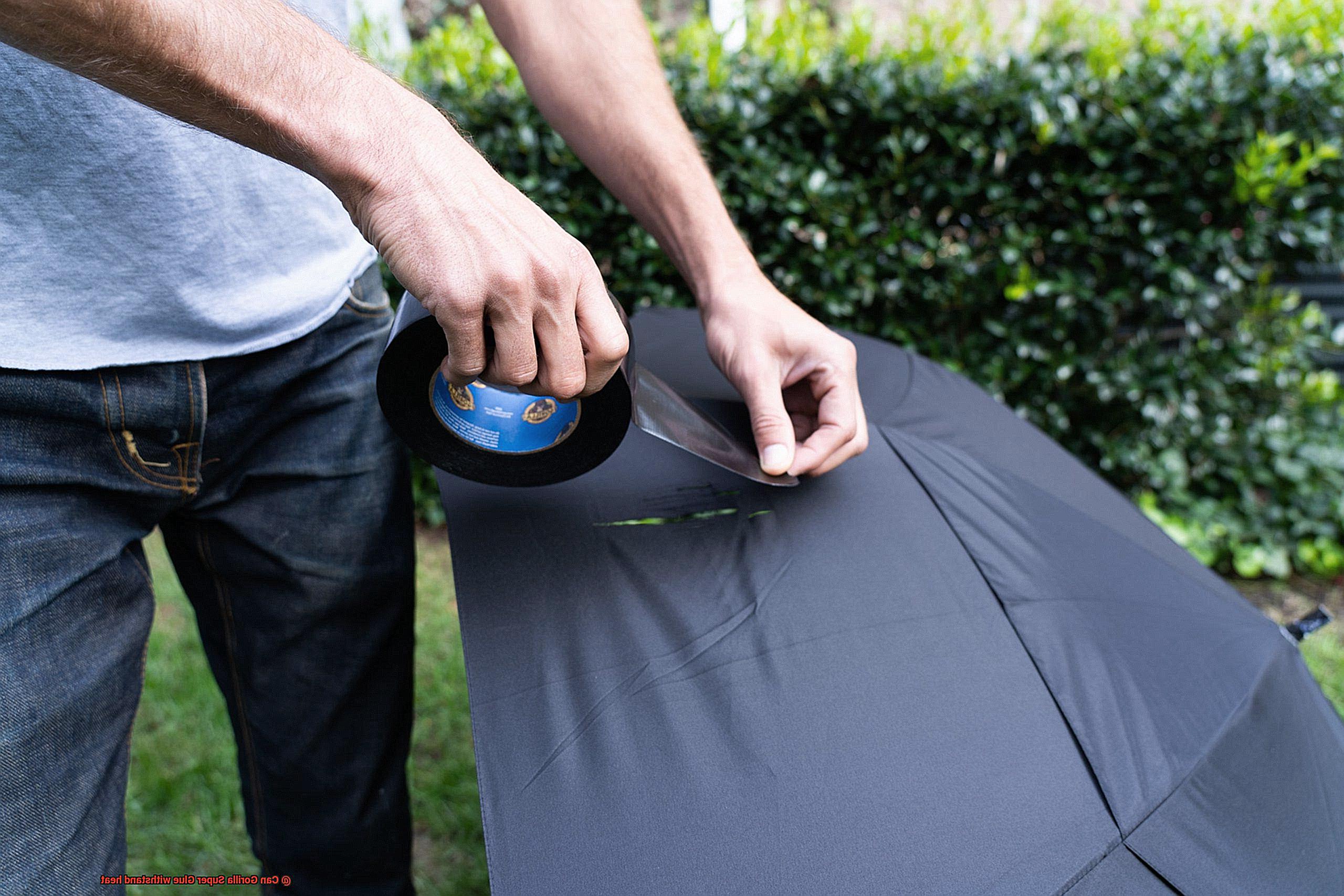
So buckle up and join us on this thrilling adventure through the world of Gorilla Super Glue. Get ready for some jaw-dropping results that will leave you wondering how you ever survived without it.
What is Gorilla Super Glue?
Contents
- 1 What is Gorilla Super Glue?
- 2 How Does Heat Affect Gorilla Super Glue?
- 3 Temperature Range of Gorilla Super Glue
- 4 Factors That Affect the Heat Resistance of Adhesives
- 5 Is Gorilla Super Glue Suitable for High-Temperature Applications?
- 6 Other Heat-Resistant Adhesive Options
- 7 Precautions to Take When Using Gorilla Super Glue in Hot Conditions
- 8 Conclusion
When it comes to finding the perfect adhesive for all your bonding needs, look no further than Gorilla Super Glue. This exceptional adhesive is a cyanoacrylate-based glue that offers unparalleled strength, quick-drying capabilities, and resistance to impacts, moisture, and temperature changes. Whether you’re a DIY enthusiast, a professional craftsman, or a hobbyist, Gorilla Super Glue is the go-to adhesive that will never let you down.
Unbeatable Strength and Rapid-Drying:
Gorilla Super Glue is renowned for its incredible strength and rapid-drying formula. As soon as it’s applied, it forms an incredibly strong bond within seconds, allowing you to move forward with your project immediately. No more wasting time waiting for the glue to dry. This feature is especially beneficial for time-sensitive repairs or when you need instant results.
Versatility and Durability:
The versatility of Gorilla Super Glue is truly remarkable. It can bond a wide range of materials with ease, including wood, metal, ceramic, leather, plastics, and more. Whether you’re fixing a broken chair leg or creating a beautiful craft project, this adhesive is up to the task.
Furthermore, once cured, Gorilla Super Glue provides exceptional resistance to impacts and vibrations. Your repairs and projects will stay intact even in the face of moderate stress and movement.
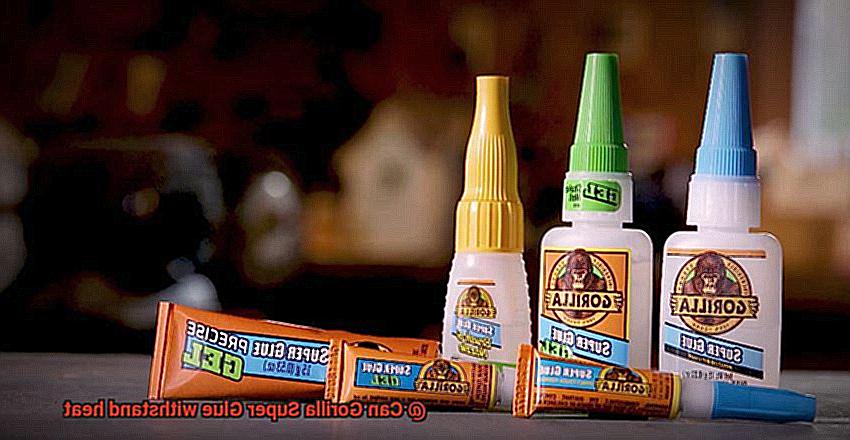
Moisture and Temperature Resistance:
Gorilla Super Glue is designed to withstand typical environmental conditions. While it may not be completely impervious to water or extreme heat, it exhibits excellent resistance to moisture and temperature changes without compromising its bonding strength. This makes it suitable for both indoor and outdoor use, allowing you to tackle any project without worrying about the elements.
Specialized Formulations for Specific Needs:
Gorilla Super Glue offers specialized formulations to cater to specific bonding requirements. If you’re working with porous materials like fabric or foam, there are variants available that are specifically designed for these applications. Additionally, for demanding projects that require extra strength, Gorilla Super Glue offers impact-tough versions that provide enhanced bonding capabilities.
How Does Heat Affect Gorilla Super Glue?
The power of Gorilla Super Glue is undeniable when it comes to adhesive strength. However, this mighty glue is not impervious to the forces of heat. Let’s explore how heat can impact the performance of Gorilla Super Glue and what precautions can be taken to ensure optimal results.
Softening and Melting:
When exposed to high temperatures, Gorilla Super Glue can soften or even melt. This compromises the integrity of the bond and weakens its strength. The melting point of this glue is approximately 180°F (82°C), so any temperature surpassing this threshold can render it ineffective.
Variations in Temperature Sensitivity:
The exact temperature at which Gorilla Super Glue starts to degrade may vary based on factors such as formulation and duration of heat exposure. However, it is generally recommended to avoid prolonged exposure to temperatures exceeding 140°F (60°C) for optimal performance.
Harmful Fumes:
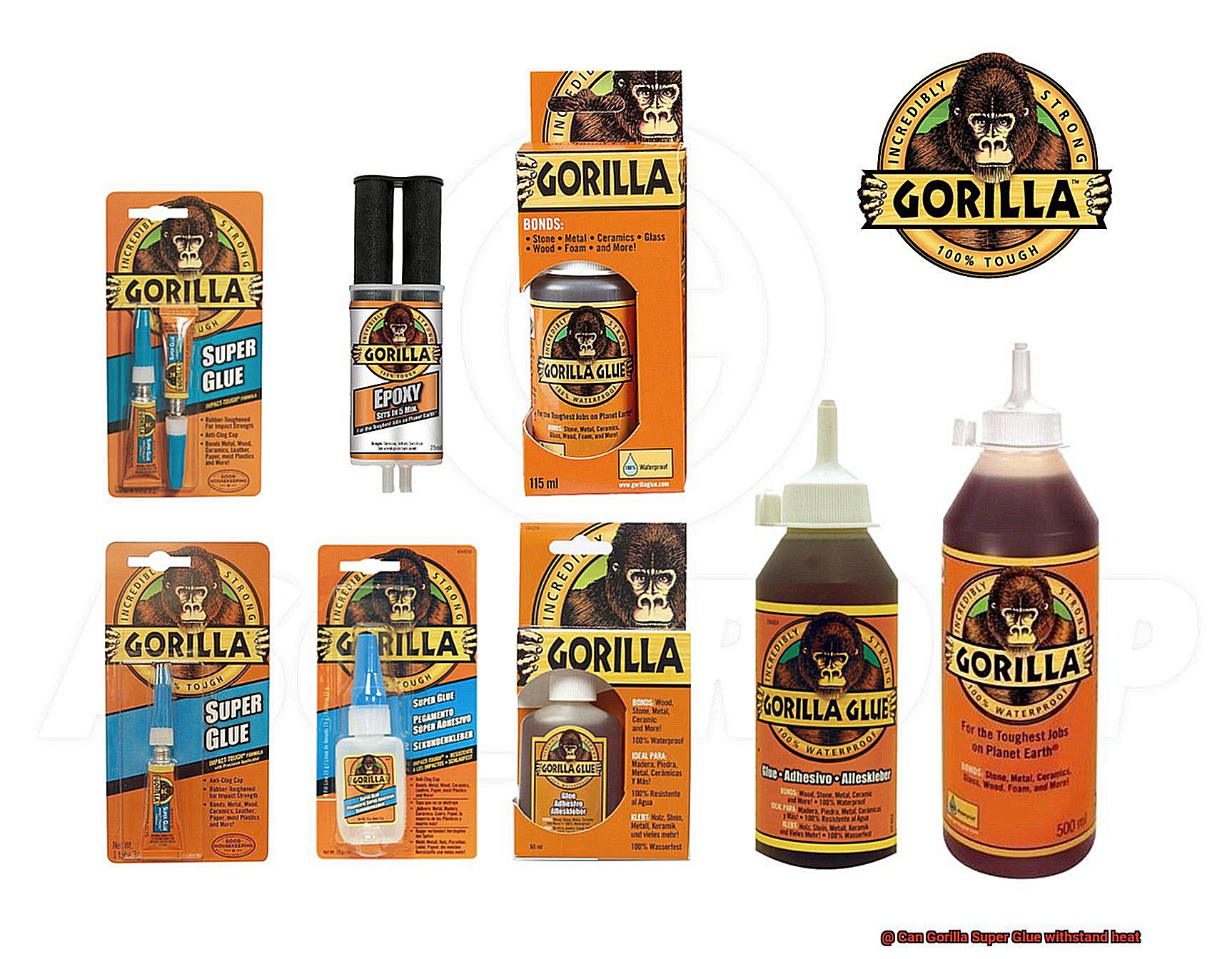
Heat can also trigger the release of potentially harmful fumes from Gorilla Super Glue. These fumes can cause irritation and respiratory issues if inhaled. To ensure safety, it is vital to use the glue in a well-ventilated area when subjected to heat.
Brittle Bonds:
Extreme heat makes Gorilla Super Glue more brittle, increasing the likelihood of cracking or breaking under stress. This compromises the durability and longevity of the bond.
To prevent heat-related issues with Gorilla Super Glue, it is crucial to store it in a cool, dry place away from direct sunlight or any heat sources. If you anticipate regular use in high-temperature environments, exploring alternative adhesives specifically designed for such conditions may be wise.
Temperature Range of Gorilla Super Glue
In the realm of adhesive superheroes, Gorilla Super Glue reigns supreme. With its unmatched strength and bonding capabilities, it’s the go-to choice for all your sticking needs. However, even heroes have their limitations, and Gorilla Super Glue is no exception.
Today, we delve into the temperature range of this mighty glue, exploring its resilience and how extreme temperatures can impact its performance.
The Chilling Challenge:
As temperatures plummet, so does the curing process of Gorilla Super Glue. The cold can put a slumber on its bonding powers, making the glue take longer to set. To ensure optimal results, use Gorilla Super Glue when temperatures rise above freezing.
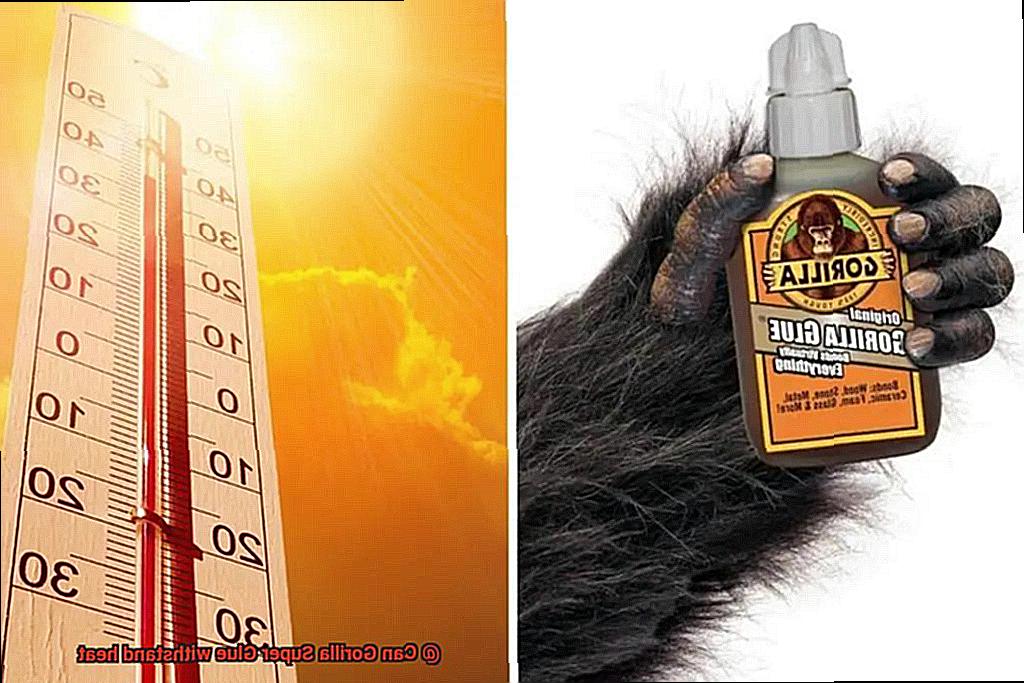
The Fiery Foe:
Though renowned for its strength, Gorilla Super Glue can fall victim to prolonged exposure to scorching temperatures. Heat has the power to soften the glue and weaken its bond. Beware, for this heroic adhesive has a melting point of 180°F (82°C), rendering it vulnerable in extreme heat. To avoid any sticky situations, steer clear of temperatures surpassing 140°F (60°C) for extended periods.
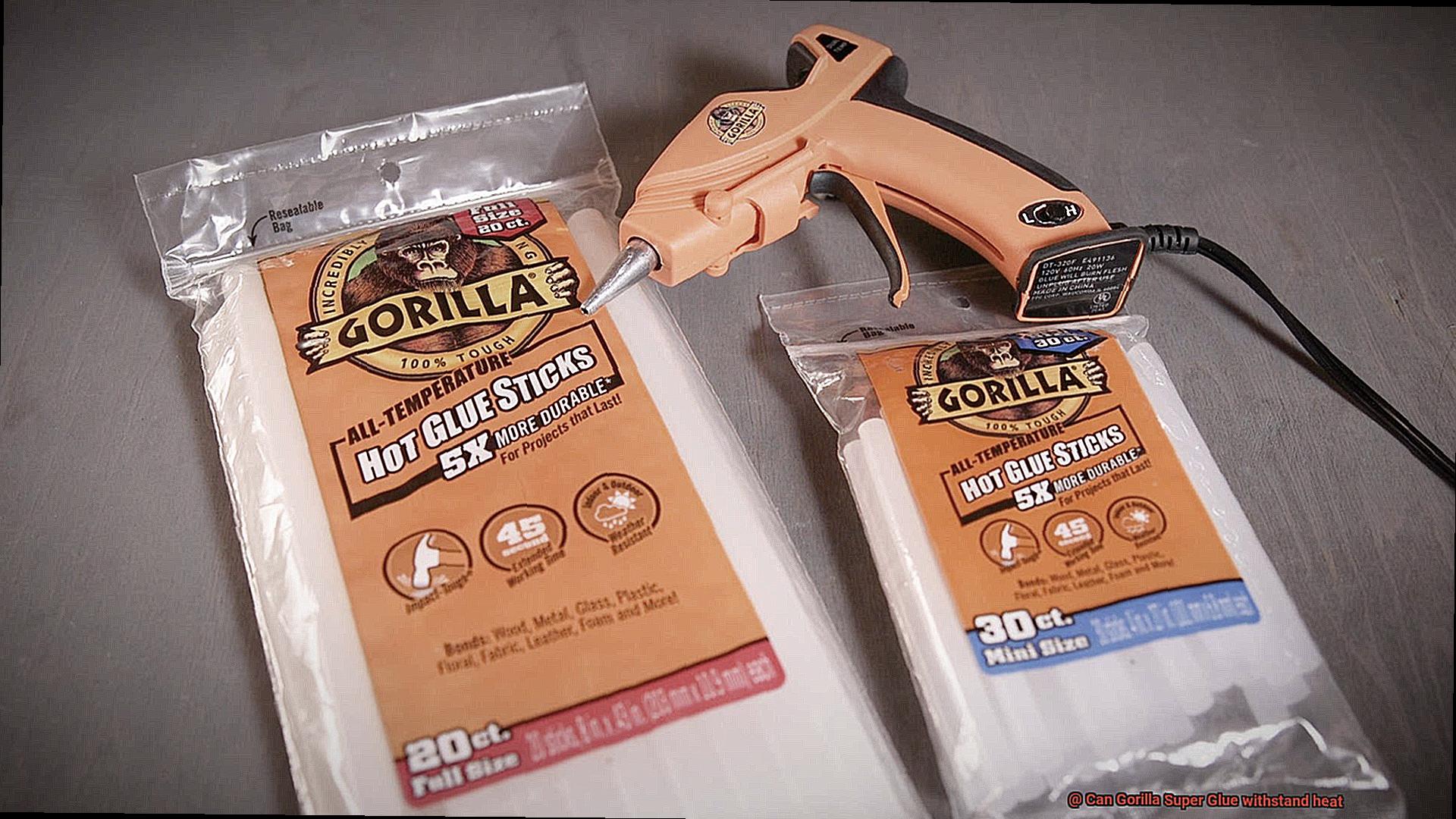
The Heat-Resistant Heroes:
In scenarios where heat resistance is paramount, turn to Gorilla Super Glue Gel or other specialized heat-resistant adhesives. These extraordinary alternatives are forged to withstand blistering heat while maintaining their unyielding bond strength.
Safety Takes the Spotlight:
When engaging Gorilla Super Glue in fiery environments, proper ventilation becomes a lifesaver. Heat can incite fumes from the glue that irritate and harm respiratory health when inhaled. Always work in well-ventilated areas and take necessary precautions to safeguard yourself.
Storage and Tender Care:
To preserve Gorilla Super Glue’s prime state, store it in cool, dry conditions far from the clutches of direct sunlight or any sources of warmth. This preserves the adhesive’s integrity and extends its glorious shelf life.
Factors That Affect the Heat Resistance of Adhesives
The secret lies in understanding the factors that affect the heat resistance of adhesives. In this article, we will unravel the mysteries behind glue’s ability to withstand high temperatures and explore how different factors play a role in determining its heat resistance.
Chemical Composition:
Adhesives with different chemical structures exhibit varying levels of heat resistance. For instance, epoxy adhesives are renowned for their exceptional heat resistance due to the presence of cross-linked polymer chains. On the other hand, cyanoacrylate adhesives, like Gorilla Super Glue, have lower heat resistance as they consist of a monomer that polymerizes rapidly upon contact with moisture.
Cure Time and Temperature:
The curing process greatly impacts an adhesive’s ability to withstand heat. Adhesives that require higher temperatures for curing, such as thermosetting adhesives, exhibit superior heat resistance. The elevated temperatures during curing facilitate stronger cross-linking within the adhesive, resulting in enhanced resilience against high temperatures.
Bond Surface:
Smooth and clean surfaces promote better bonding and enhance an adhesive’s ability to endure heat. Conversely, rough or contaminated surfaces may weaken the bond or create vulnerable areas where heat can easily penetrate, compromising overall heat resistance.
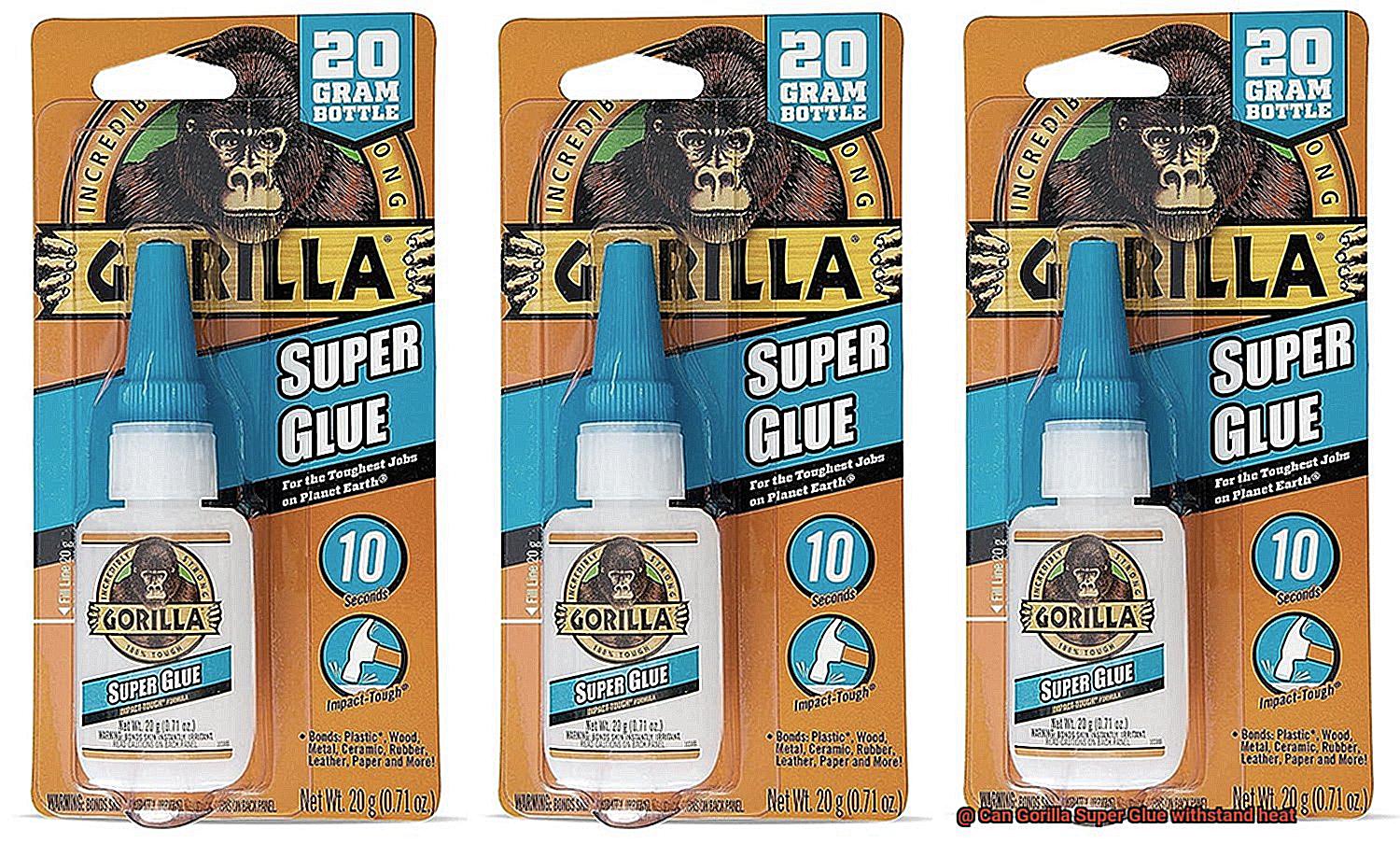
Application Method:
Proper application techniques ensure uniform coverage and minimize the presence of air bubbles or gaps in the bond, leading to stronger and more heat-resistant bonds. Inadequate application techniques may result in weak spots or areas where the adhesive is not fully cured, making it more susceptible to heat damage.
Environmental Conditions:
High temperatures or extreme humidity can diminish an adhesive’s heat resistance over time. Heat can accelerate chemical reactions within the adhesive, causing it to degrade or lose its structural integrity. Excessive moisture can also lead to the breakdown of certain types of adhesives, compromising their ability to withstand heat.
Is Gorilla Super Glue Suitable for High-Temperature Applications?
When it comes to finding the perfect adhesive for high-temperature applications, you need to choose wisely. Gorilla Super Glue may be popular for its strong bonding capabilities, but can it withstand extreme heat? Let’s dive into the research and find out.
First and foremost, let’s explore the temperature range at which Gorilla Super Glue can effectively bond materials. According to the manufacturer, this adhesive can withstand temperatures up to 200°F (93°C). This means it can be used in various everyday applications where moderate heat exposure is expected.
However, it’s crucial to note that the bond strength of Gorilla Super Glue may weaken or fail altogether when exposed to high temperatures for extended periods. The adhesive properties of the glue are optimized for room temperature applications, and extreme heat can cause degradation or even melting of the adhesive.
Another factor to consider is the type of materials being bonded together. While Gorilla Super Glue may be suitable for some heat-resistant materials like metal or glass, it may not be appropriate for others such as plastics or rubber, which can soften or deform under high temperatures.
So, what should you do if you need an adhesive for high-temperature applications? It’s time to explore alternative options. There are specialized high-temperature glues available in the market that are specifically designed to withstand extreme heat without compromising their bond strength. These adhesives are formulated with heat-resistant properties and can provide reliable and durable bonds in high-temperature environments.
To ensure success in high-temperature applications, it’s always a good idea to consult the manufacturer’s instructions and guidelines before using any adhesive. They often provide specific information about the glue’s temperature resistance and suitability for different materials.
Other Heat-Resistant Adhesive Options
When it comes to withstanding extreme heat, Gorilla Super Glue may not be your best bet. Luckily, there are plenty of other heat-resistant adhesive options on the market that can handle scorching temperatures without breaking a sweat. Let’s dive into the world of heat-resistant adhesives and explore some top choices.
First up, we have epoxy adhesives. These versatile adhesives consist of two components – a resin and a hardener. When mixed together, they undergo a chemical reaction that forms a robust and durable bond. Epoxy adhesives are renowned for their excellent heat resistance properties, making them perfect for applications that involve exposure to high temperatures. They can withstand temperatures up to 300°F (149°C) and are commonly used in industries such as automotive, aerospace, and electronics.
Next on the list is silicone adhesive. These flexible adhesives boast exceptional heat resistance, making them ideal for applications that demand both durability and the ability to withstand extreme temperatures.
Silicone adhesives can maintain their adhesive properties even at temperatures exceeding 300°F (149°C). With widespread use in industries like automotive, aerospace, and electronics, silicone adhesives are a reliable choice in high-temperature environments.
If you’re dealing with even higher temperatures, ceramic-based adhesives are worth considering. These specialized adhesives contain ceramic fillers that provide outstanding thermal resistance, allowing them to endure temperatures up to a whopping 2,000°F (1,093°C).
Commonly used in high-temperature applications like bonding metal components in furnaces or industrial ovens, ceramic-based adhesives are the go-to option when things get really hot.
Lastly, we have specialized heat-resistant adhesives. These adhesives are specifically designed to tackle extreme heat and often feature advanced formulations for exceptional resistance to elevated temperatures. Whether you’re in the aerospace, automotive, or manufacturing industry, these specialized adhesives can handle any fiery challenge that comes their way.
Precautions to Take When Using Gorilla Super Glue in Hot Conditions
Using Gorilla Super Glue in hot conditions requires taking certain precautions to ensure optimal bonding results. Extreme temperatures can affect the adhesive properties, making it more challenging to achieve a strong bond. By following these precautions, you can overcome the challenges and get the most out of Gorilla Super Glue in hot conditions.
Firstly, it’s important to be aware of the temperature limitations of Gorilla Super Glue. This adhesive is designed to work best within a temperature range of 50°F to 180°F (10°C to 82°C). Outside of this range, the adhesive properties may be compromised, leading to weakened bonds or failure. If you’re working in scorching hot conditions, it might be best to consider alternative heat-resistant adhesives.
Avoiding direct sunlight or any other intense heat sources is another crucial precaution. Prolonged exposure to heat can cause Gorilla Super Glue to cure faster than intended, making it difficult to properly position and bond materials. Additionally, excessive heat can degrade the adhesive strength over time.
Before applying Gorilla Super Glue in hot conditions, ensure that the surfaces being bonded are clean and dry. Heat can exacerbate existing contaminants or moisture on the surfaces, leading to poor adhesion. Thoroughly clean the surfaces and allow them to dry completely before applying the glue for optimal results.
When working in hot conditions, applying the glue in small amounts is advisable. The heat can accelerate the curing process, making it challenging to reposition or adjust materials once they come into contact with the glue. Applying smaller amounts allows for better control and flexibility during the bonding process.
Conducting a small test on a less visible area before using Gorilla Super Glue on a larger scale in hot conditions is always a good idea. This helps ensure that the glue performs as expected under specific temperature conditions and provides a reliable bond. If any issues arise during the test, consider alternative adhesive options.
Proper storage is crucial to maintain the effectiveness of Gorilla Super Glue in hot conditions. Store the product in a cool and dry place, away from direct sunlight or extreme temperatures. Extreme heat can cause the glue to thicken or become less effective, resulting in subpar bonding results.
In extremely hot conditions where Gorilla Super Glue may not be suitable, explore alternative adhesive options specifically designed to withstand high temperatures. Epoxy adhesives, silicone adhesives, and ceramic-based adhesives are great alternatives that can handle scorching temperatures without breaking a sweat.
mLayFRQ7jdo” >
Conclusion
In conclusion, Gorilla Super Glue is a mighty adhesive that packs a punch with its incredible strength, lightning-fast drying time, and impressive resistance to impacts, moisture, and temperature fluctuations. However, when it comes to extreme heat, this glue does have its limitations.
When faced with high temperatures, Gorilla Super Glue can’t quite handle the heat. It may soften or even melt under the scorching conditions, jeopardizing the bond’s integrity and weakening its strength. With a melting point of around 180°F (82°C) and degradation starting at temperatures over 140°F (60°C), this glue simply can’t take the heat.
To make sure you get the best results with Gorilla Super Glue in hot environments, it’s crucial to store it in a cool, dry place far away from direct sunlight or any sources of heat. When using the glue in high-temperature settings, proper ventilation is necessary to avoid inhaling potentially harmful fumes.
If you need an adhesive that can withstand extreme heat, it might be worth exploring other options specifically designed for such conditions. Epoxy adhesives, silicone adhesives, and ceramic-based adhesives are just a few examples of alternatives that can hold their own against scorching temperatures without compromising bond strength.
Always consult the manufacturer’s instructions and guidelines before using any adhesive for high-temperature applications. These instructions provide vital information about temperature resistance and suitability for different materials.
In summary, while Gorilla Super Glue is an all-around tough customer suitable for many bonding needs, it might not be your go-to choice for applications involving prolonged exposure to extreme heat.

